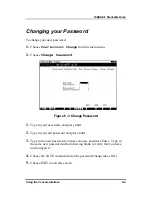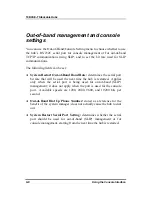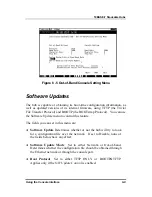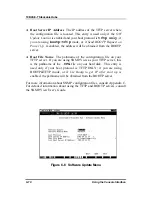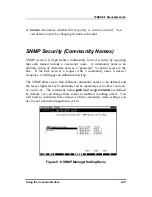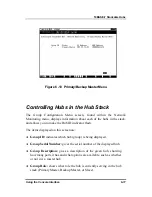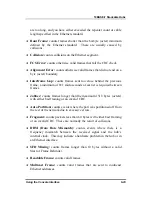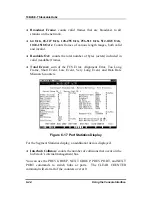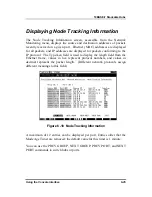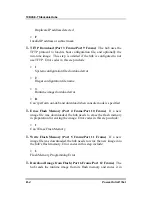
10BASE-T Stackable Hubs
You can use the PREV GROUP and NEXT GROUP commands to switch to
another hub, or you can enter the hub’s Group ID number directly into the
Group ID field.
Controlling Individual Ports
The Port State Menu, accessible from the Network Monitoring menu, allows
you to view the status of individual ports and to control their settings. The
available settings are:
♦
Group ID:
determines which hub’s ports are displayed.
♦
Port ID:
determines which port is displayed. Ports 13–16 on the 12-
port hubs, and ports 25–28 on the 24-port hubs, represent the daisy
chain ports, the external AUI connector, the internal expansion port,
and the management port, respectively.
♦
Link Test:
displays Up if there is a station connected to the port, and
Down otherwise.
♦
Link Test State:
toggle control used for controlling whether or not
the port requires link pulses. If this field is set to Enable, the port will
check for link pulses, and will only transmit if there is a good link to
another station. If the field is set to disabled, Link Test will always
display Up, the link indicator will always be lit, and the hub will
always transmit data to the port whether a station is connected or not.
♦
Receive Polarity:
displays Normal if the polarity of the port’s receive
lines is normal, and Reversed if the two receive lines have been
swapped.
♦
Polarity Reversal:
this toggle determines whether or not the hub will
do automatic polarity reversal on the port. If enabled, the hub will
automatically reverse the polarity of reversed signals. If disabled, the
hub will repeat signals received over that port with reversed polarity.
Using the Console Interface
6-19

